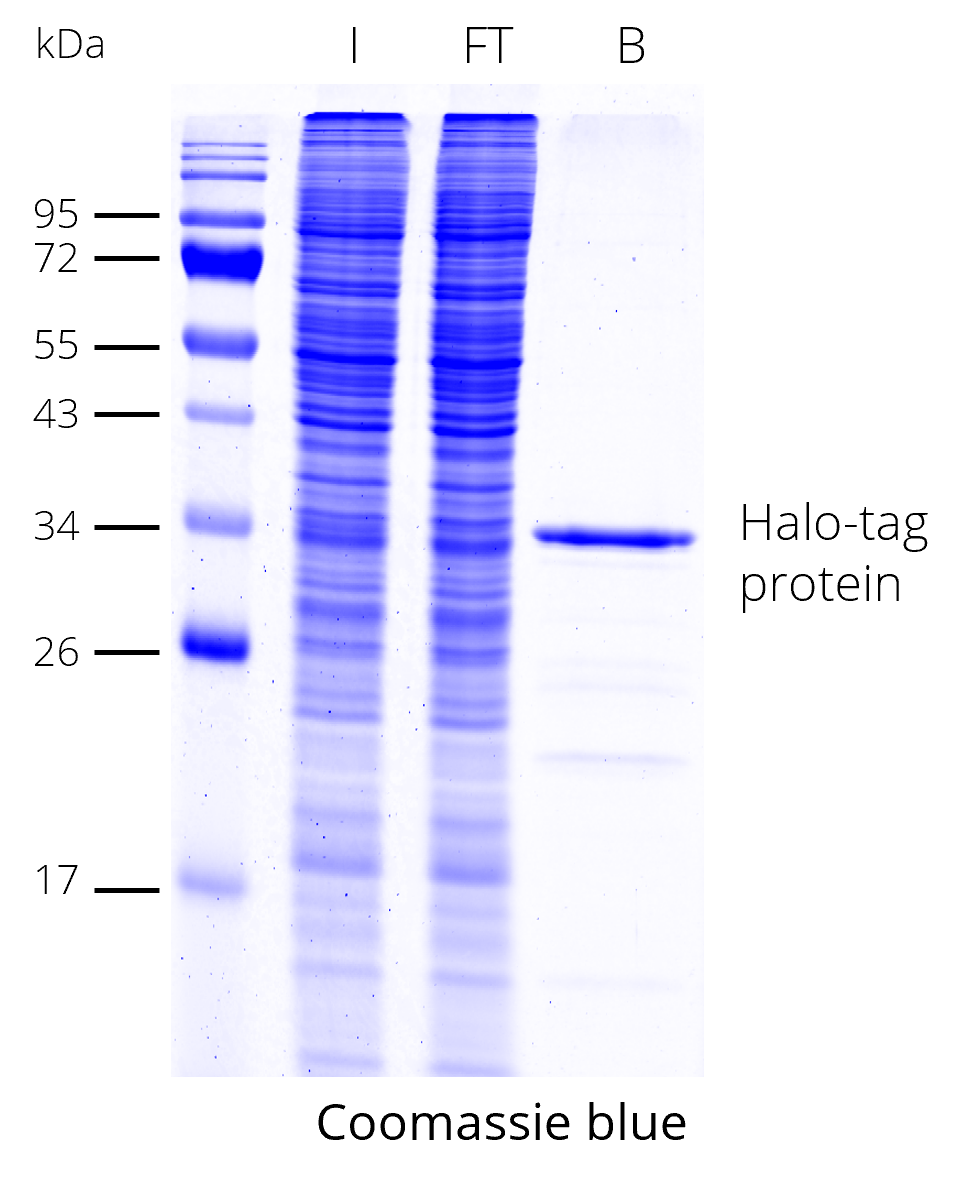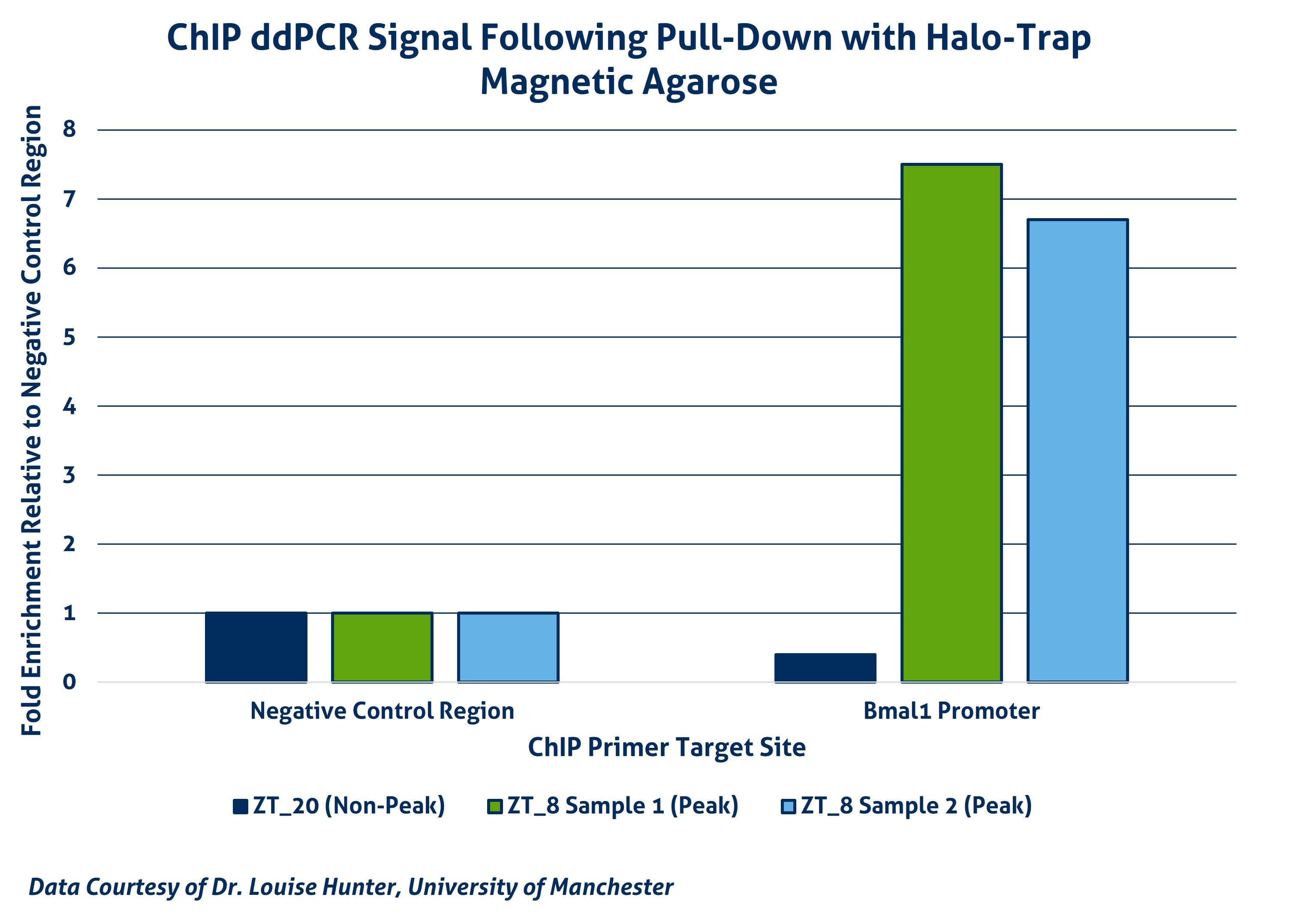Validation Data Gallery
Product Information
The ChromoTek Halo-Trap Magnetic Agarose consists of an anti-Halo-tag Nanobody (VHH), which is covalently bound to magnetic agarose beads. Halo-Trap Magnetic Agarose is used to immunoprecipitate Halo-tag proteins from cell extracts of various organisms like mammals, plants, bacteria, yeast, insects etc. in the presence or absence of a covalently bound ligand. The interaction between Halo-Trap and the Halo-tag protein is reversible.
| Description | Immunoprecipitation of Halo-tagged proteins and their interacting factors with anti-Halo Nanobody conjugated to magnetic agarose beads.
• Halo Trap recognizes Halo fusion proteins that are already bound to chloralkane-based ligands of the Halo-tag, e.g. dyes, biotin, etc. • Halo-Trap can be used for affinity purification • Bound Halo-fusion protein can be eluted without protease • Structure and function are characterized |
| Applications | IP, CoIP, ChIP, RIP |
| Specificity/Target | Halo-tag (modified variant of the bacterial haloalkane dehalogenase enzyme from Rhodococcus rhodochrous) in the absence or presence of covalently bound chloralkane-based ligands. |
| Binding capacity | 12.5 μg of recombinant Halo-tag per 25 μL bead slurry |
| Conjugate | Magnetic agarose beads; bead size: ~40 µm (cross-linked 6 % magnetic agarose beads) |
| Elution buffer | SDS sample buffer 0.2 M glycine pH 2.5 |
| Wash buffer compatibility | 2 M urea, 2 M NaCl, 10 mM DTT, 2 % Nonidet P40 Substitute, 2 % Triton X-100 |
| Type | Nanobody |
| Class | Recombinant |
| Host | Alpaca |
| Affinity (KD) | Dissociation constant KD of 2 nM |
| Compatibility with mass spectrometry | The Halo-Trap is optimized for on-bead digestion. For the application note, please click here: On-bead digest protocol for mass spectrometry |
| RRID | AB_2892995 |
| Storage Buffer | 20% ethanol |
| Storage Condition | Upon receipt store at +4°C. Do not freeze! |
| Size | 25ul/reactions (eg:20rxns=500ul slurry) |
Documentation
| SDS |
|---|
| otma_SDS_Halo-Trap Magnetic Agarose (EN) |
| Datasheet |
|---|
| Halo-Trap Magnetic Agarose Datasheet |
Publications
| Application | Title |
|---|---|
Cell Rep Increased degradation of FMRP contributes to neuronal hyperexcitability in tuberous sclerosis complex | |
Sci Adv ER-export and ARFRP1/AP-1-dependent delivery of SARS-CoV-2 Envelope to lysosomes controls late stages of viral replication | |
Immunity Apolipoprotein E aggregation in microglia initiates Alzheimer's disease pathology by seeding β-amyloidosis |

![Halo-Trap Magnetic Agarose for immunoprecipitation of Halo-tag proteins. HEK293T cell lysate with Halo-tag protein. Coomassie and Western blot. Halo-tag antibody [28A8], monoclonal mouse IgG1and anti-mouse secondary antibody. I: Input, FT: Flow-Through, B: Bound Halo-Trap Magnetic Agarose for immunoprecipitation of Halo-tag proteins. HEK293T cell lysate with Halo-tag protein. Coomassie and Western blot. Halo-tag antibody [28A8], monoclonal mouse IgG1and anti-mouse secondary antibody. I: Input, FT: Flow-Through, B: Bound](https://www.ptglab.com/products/pictures/Result-otma.png)




